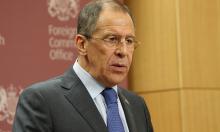Novodevichy convent marks two anniversaries
On Tuesday, when the Russian Orthodox Church will celebrate the holiday of the Icon of Our Lady of Smolensk, the Novodevichy Convent in Moscow will celebrate the 480th anniversary of when it was founded and the 10th anniversary of when it reopened.
The convent's nuns, parishioners, Russian Orthodox Church hierarchs, Moscow government officials and representatives of the State History Museum (a branch is located in the convent's grounds) will take part in the religious celebrations (a divine liturgy and solemn procession).
The service will be held in the convent's oldest Smolensk cathedral for the first time in many years. The cathedral contains frescoes that date back to the 16th century and it has been under restoration for many years.
The convent was founded by Tsar Vasily III in 1524 to mark Russia regaining of the city of Smolensk. Prayers to the Icon of Our Lady of Smolensk are believed to have helped Russian troops regain Smolensk after 110 years of the Lithuanian domination.
Located in southwestern Moscow near bridges across the Moskva river, the convent was also used as a fortress. The convent was a center of major historical events for four centuries. In 1598, Boris Godunov, who was staying with the convent, was begged to ascend to the Russian throne there. In August 1612, militia units led by Minin and Pozharsky defeated Polish and Swedish invaders near the convent's walls.
In the late 17th century, the convent was involved in a fierce race for power between Peter the Great and his stepsister Sophia. Peter the Great gained the upper hand, while Sophia was forced to take the veil. She died in the convent in 1704.
In 1812, the nunnery was used by Napoleonic troops to store food. When Napoleon left Moscow, he ordered that the convent be destroyed. However, the nuns prevented this.
The convent's architecture took its present shape in the late 17th century. This is one of the most beautiful architectural monuments in Russia and was included in the Unesco World Heritage List.
Members of the Russian tsarist families, boyars, heroes of the 1812 Patriotic War, participants in the December 1825 uprising of Russian noblemen, prominent cultural figures - historian Sergei Solovyov and philosopher Vladimir Solovyov - are buried in the convent's cemetery.
Subscribe to Pravda.Ru Telegram channel, Facebook, RSS!





